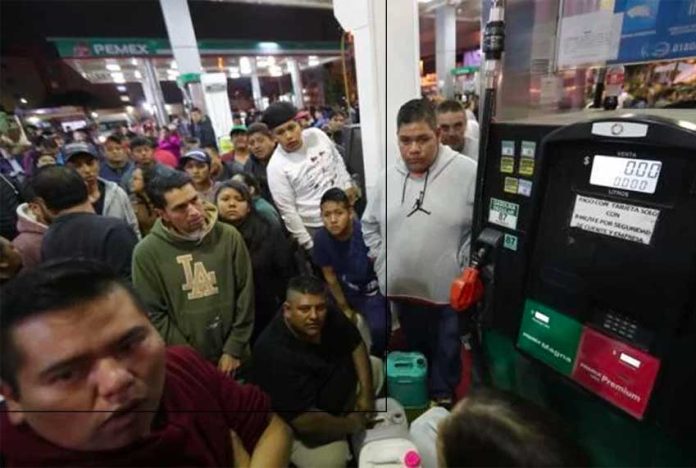Gasoline shortages that have affected several states over the past three weeks are still hitting Jalisco hard: 85% of gas stations in Guadalajara and 80% in the rest of the state remain closed.
The petroleum pipeline between Salamanca, Guanajuato, and Guadalajara reopened Sunday morning but was illegally tapped three times in a single day, Pemex CEO Octavio Romero said.
Although each puncture was repaired, the sabotage caused the pipeline’s service to be patchy so it was unable to transport enough fuel to Jalisco to significantly alleviate the shortages.
The pipeline is now expected to operate every second day, sending 20,000 barrels of gasoline to the Jalisco state capital.
The duct will be opened tomorrow and then again on Friday, state government official Alejandro Guzmán Larralde said.
Meanwhile, gasoline continues to arrive in Jalisco by tanker truck but the deliveries are much slower than those made via pipeline and when it gets to gas stations, it is quickly snaffled up by motorists, including those who cross the border from surrounding states to fill up.
“Stations in the north [of the state], the highlands and the southeast are on the border with communities in the states of Zacatecas, the Bajío region and Michoacán . . . [Residents of] those communities go to service stations that are in [Jalisco] state territory and use up the inventories,” Guzmán said. “Resupply . . . hasn’t kept up . . . .”
In addition, it’s difficult to get fuel to some parts of the state, such as the Sierra de Amula, because of the terrain the tankers have to cross. Long lines of fuel distribution vehicles at terminals in Manzanillo and Mazatlán have also slowed down deliveries.
“Resupply times at gas stations in the interior of the state have been increasing,” Guzmán said.
Jalisco is only receiving enough fuel on a daily basis to meet half of demand, he said, which has increased even further due to panic buying.
That response from motorists has both exacerbated and created shortages in other parts of the country.
At least seven gas stations were closed this morning in Monclova, Coahuila, while there were long lines of motorists waiting to fill up at those that were open.
Ricardo Zertuche Martínez, president of the local chapter of the Mexican Chamber of Commerce (Canaco), said he had spoken to Monclova gas station owners and they told him that panic buying was to blame for the lack of fuel.
Another Monclova business leader, Rolando Rivero Ceballos of the National Chamber for Industrial Transformation (Canacintra), urged people not to place unneeded pressure on gasoline supplies through panic buying.
“. . . Yes, there is gasoline and there will be [more gasoline] . . .” he said.
In Monterrey, Nuevo León, and other municipalities in the city’s metropolitan area some gas stations were also closed this morning and long lines were observed at those that were open.
Leaders of the gas station trade organization Onexpo said that rumors of fuel shortages that circulated on social media set off a buying spree at gas stations in Monterrey that caused some to run out of fuel.
The organization’s Nuevo León president, Carlos Guerra, said that if people resist the urge to make panic purchases, supply at gas stations in Monterrey will return to normal soon.
The federal government has explained that the gasoline shortages in more than 10 states were the result of President López Obrador’s decision to close several major petroleum pipelines as part of the strategy to combat fuel theft.
But there have also been claims that reduced gasoline imports from the United States, inefficiency at Mexico’s oil refineries and insufficient investment in logistics infrastructure have contributed to the shortages.
Source: Milenio (sp), El Universal (sp)
